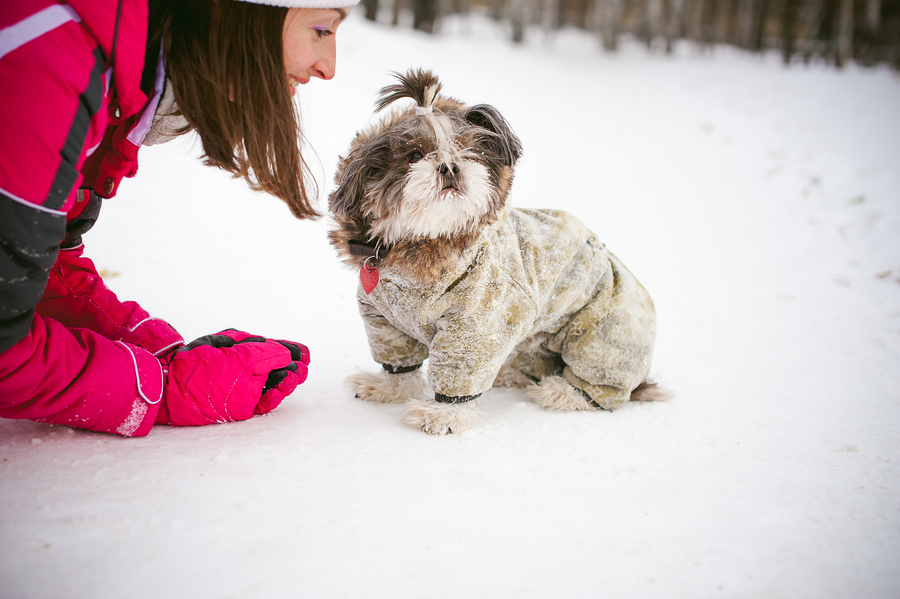The chill in the air, the frosty ground, and the sparkle of freshly fallen snow – winter can be a beautiful time for taking your furry friend on outdoor adventures. However, when the temperatures drop, it’s crucial to prioritize your dog’s safety and comfort during those brisk winter walks. In this comprehensive guide, we will explore how to keep your dog warm and safe during winter outings, and the role of pet insurance in ensuring your four-legged companion’s well-being in the cold season.
Understanding Winter Challenges for Dogs
Before we delve into the tips for keeping your dog cozy during winter walks, it’s essential to understand the specific challenges that dogs face when the mercury plummets.
Cold Temperatures:
Just as humans can get cold, dogs can, too. Prolonged exposure to freezing temperatures can lead to frostbite and hypothermia. Certain breeds, particularly those with short coats, are more vulnerable to the cold.
Icy Surfaces:
Slippery sidewalks and icy paths pose a risk for dogs. They can easily slip and injure themselves. Additionally, salt and ice melt chemicals used on roads can irritate a dog’s paw pads.
Reduced Visibility:
Winter often means shorter daylight hours, limiting visibility during walks. This can increase the chances of accidents, especially in areas with heavy snowfall.
Snow and Ice Accumulation:
Snow can accumulate between a dog’s paw pads and fur, leading to discomfort and potential injury. Ice can also form between their toes, causing pain and limping.

Tips for Safe and Warm Winter Walks
Now, let’s explore how you can ensure your dog’s safety and warmth during those refreshing winter strolls:
Invest in Dog Apparel:
To keep your dog warm during winter walks, consider investing in doggy sweaters or coats. These are particularly essential for smaller breeds or those with shorter fur. Well-fitted, insulated dog apparel can provide them with much-needed warmth.
Protect the Paws:
Your dog’s paws are vulnerable to the cold, ice, and salt on the roads. Consider using dog booties to protect their paw pads. These will keep their feet warm, prevent injuries, and shield them from harsh chemicals.
Shorten the Walks:
During frigid weather, it’s best to keep walks shorter than usual. This reduces exposure to the cold and minimizes the risk of frostbite or hypothermia. Frequent short walks can be just as effective as long ones.
Choose Safe Walking Areas:
Opt for walking areas that are well-maintained and less likely to be icy or salted. Check local pet-friendly parks and trails that are known for their winter safety.
Visibility Gear:
Ensure that you and your dog are visible to others. Days are shorter during winter, so consider using reflective gear or attaching a light to your dog’s collar or leash.
Dress Yourself Warmly:
Don’t forget to layer up yourself! Keeping warm during the walk is essential for your comfort, and it’s easier to ensure your dog’s safety when you’re comfortable.
Frequent Checks:
Periodically check your dog’s paws for ice accumulation or irritation. Remove any snow or ice buildup between their toes, and clean their paws after the walk to get rid of salt and chemicals.
Avoid Frozen Water Bodies:
Stay away from frozen lakes, ponds, or rivers during your walks. Ice may not be thick enough to support your dog’s weight, and a fall through the ice can be life-threatening.
The Importance of Pet Insurance
As a responsible pet owner, you want to ensure that your dog remains safe and healthy during winter walks and throughout the year. Pet insurance can play a significant role in achieving this goal. Here’s how it fits into the picture:
Emergency Coverage:
Despite your best efforts, accidents can happen during winter walks. A slip on the ice or an unforeseen incident can lead to injuries requiring immediate veterinary attention. Pet insurance can cover these unexpected expenses, giving you peace of mind.
Cold-Related Ailments:
Pet insurance can help cover the costs of treating cold-related ailments, such as frostbite or hypothermia. It ensures that your dog receives the necessary medical care without straining your budget.
Chronic Conditions:
For dogs with pre-existing conditions or chronic illnesses, pet insurance is invaluable. It ensures you can continue managing these conditions during the winter season, even when additional treatments or medications are needed.
Reimbursement for Medications:
Winter can exacerbate certain health conditions in dogs, requiring prescription medications. Pet insurance can help cover the cost of these medications, ensuring your furry companion’s well-being.
Preventive Care:
Many pet insurance plans offer options for preventive care. This can be particularly important in the winter to protect your dog from common cold-weather ailments and ensure their overall health.

Choosing the Right Pet Insurance
When selecting pet insurance for your dog, it’s important to consider the following factors:
Coverage Options:
Look for policies that cover a wide range of conditions, treatments, and emergencies, including those specific to winter-related issues.
Deductibles and Premiums:
Compare deductible amounts and monthly premiums to find a policy that fits your budget. Keep in mind that a higher deductible may lead to lower monthly premiums, but it could result in higher out-of-pocket costs in case of an emergency.
Reimbursement Percentage:
Different policies offer varying reimbursement percentages. Choose a policy that aligns with your financial preferences and provides the level of coverage your dog needs.
Network of Providers:
Check if the insurance company has a network of preferred veterinarians, as this can make the claims process smoother and more convenient.
Customer Reviews:
Reading customer reviews and seeking recommendations from other pet owners can provide insights into the reliability and customer service of the insurance provider.
Exclusions and Limitations:
Understand what the policy excludes and its limitations. Be aware of any waiting periods before coverage begins, and ask about how pre-existing conditions are handled.
In Conclusion
Winter walks with your dog can be a delightful experience, as long as you prioritize their safety and warmth. Taking precautions, such as dressing your dog in appropriate winter gear, protecting their paws, and choosing safe walking areas, can ensure a pleasant winter stroll for both you and your furry companion. Additionally, pet insurance is an invaluable resource to safeguard your dog’s well-being during the winter season and throughout the year.
By providing financial protection and peace of mind, pet insurance allows you to enjoy your winter adventures with your dog without worrying about the cost of unexpected accidents or illnesses. So, as you prepare for those invigorating winter walks, remember that pet insurance is an investment in your dog’s health and happiness, ensuring they stay safe and warm during the chilly months.






